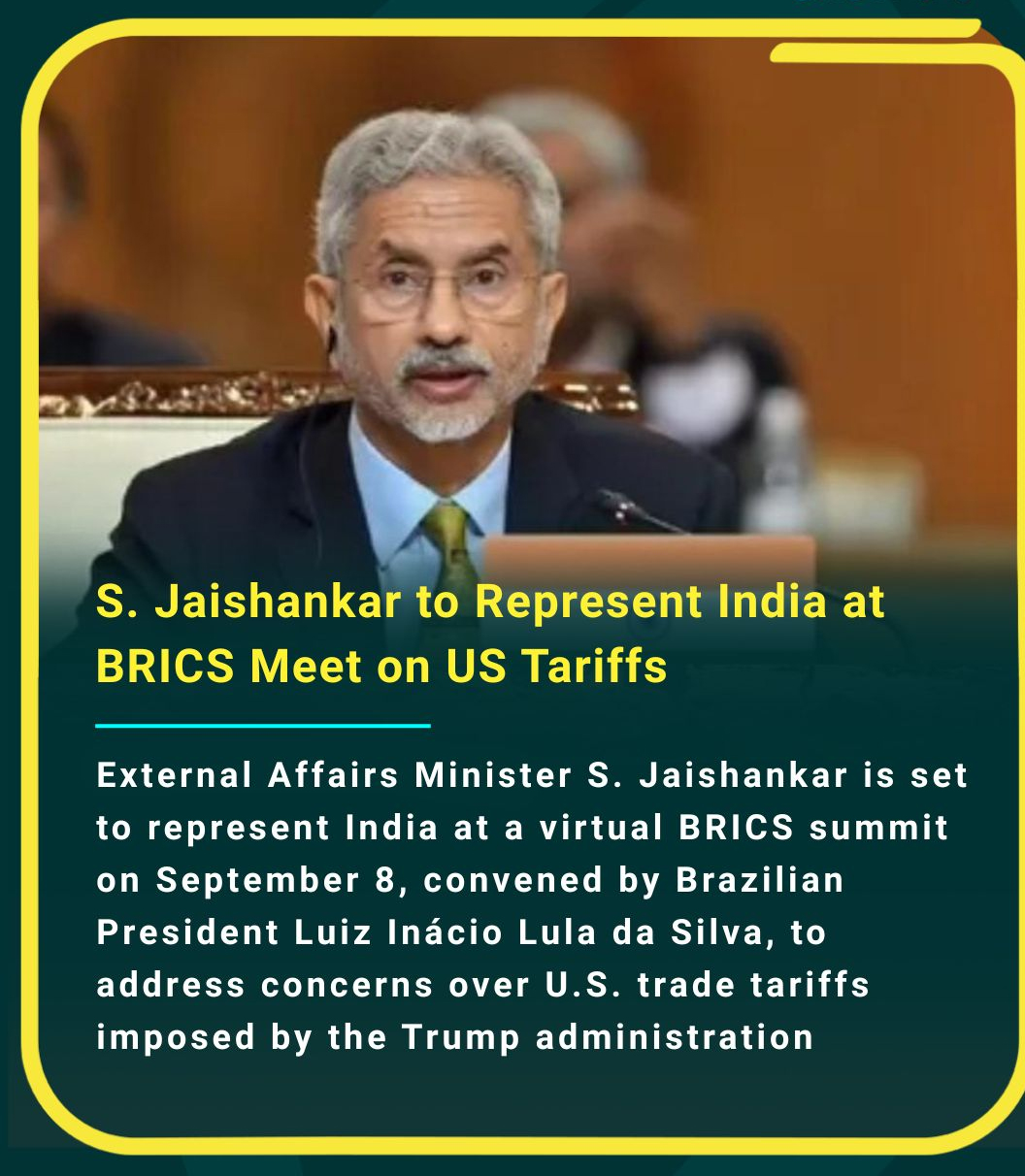Context:
India’s External Affairs Minister S. Jaishankar will represent the country at a virtual BRICS leaders’ summit, convened by Brazilian President Luiz Inácio Lula da Silva. The central agenda of the meeting is to discuss the impact of unilateral U.S. tariff hikes on BRICS member countries and explore a coordinated multilateral response.
U.S. Tariffs and Global Trade:
- On August 6, 2025, the U.S. imposed steep tariffs on BRICS countries:
- India and Brazil: 50%
- China and South Africa: 30%
- Indonesia: 19% (with exemptions for key exports)
- Russia and Iran: 10%
- These tariffs have triggered significant concerns across the Global South regarding unilateralism, trade inequality, and the erosion of multilateral trade norms.
Why this summit Matters?
- This summit showcases BRICS’s growing political cohesion in opposing Western trade dominance.
- It reinforces South-South cooperation and highlights efforts by emerging economies to reshape global economic governance.
- For India, it’s a diplomatic balancing act—asserting leadership in the Global South while maintaining strategic ties with the West.

About BRICS
Originally formed as BRIC in 2001 (Brazil, Russia, India, China), the group became BRICS with South Africa’s entry in 2010.
· Between 2024 and 2025, it expanded into BRICS+, adding Egypt, Ethiopia, Iran, UAE, and Indonesia, reflecting the bloc’s ambition to represent a broader Global South alliance.
BRICS’s Growing Significance:
· Represents 35% of global GDP and 46% of the world’s population
· Is projected to drive 58% of global GDP growth from 2024 to 2029
· Controls 44% of global crude oil production
· Operates the New Development Bank (NDB) and Contingent Reserve Arrangement (CRA) as alternatives to Western financial institutions
· Champions reform in UNSC, IMF, and World Bank
Challenges:
Despite growing unity, BRICS faces:
· China’s dominance
· Intra-bloc rivalries (e.g., India-China, Iran-Saudi Arabia)
· Diverse political systems and economic models
· Limited institutional structure and coherence
Conclusion:
The BRICS virtual summit on U.S. tariffs represents a pivotal moment in global geopolitics. It is not merely a reaction to trade barriers but a clear signal that BRICS is willing to act as a collective voice for the Global South, challenging Western dominance in economic governance. For India, participation reflects both solidarity with emerging economies and an attempt to reshape global trade rules through diplomacy, not dependence.






